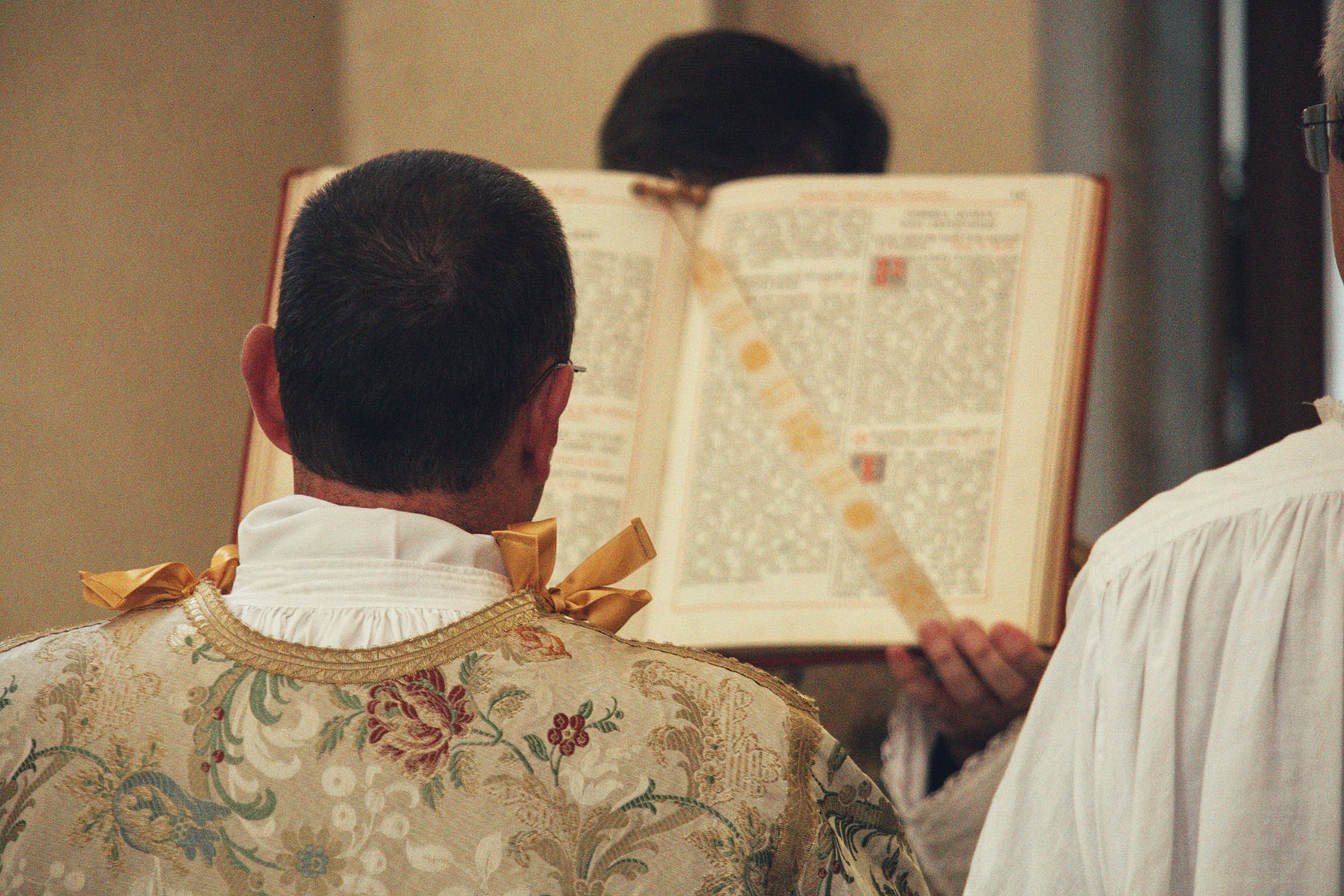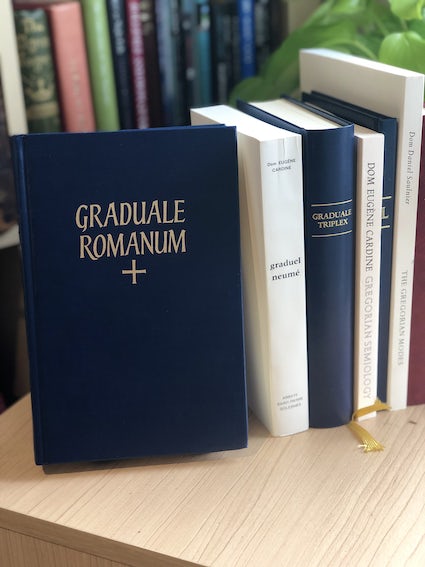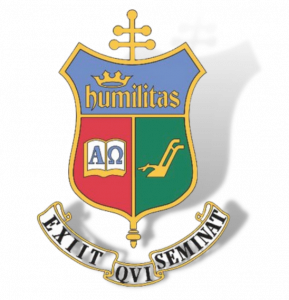Singing the Mass
As Catholics, we do not simply sing at Mass, we sing the Mass.
The musical tradition of the universal Church is a treasure of inestimable value, greater even than that of any other art. The main reason for this pre-eminence is that, as sacred song united to the words, it forms a necessary or integral part of the solemn liturgy. (Sacrosanctum Concilium 112)
Music is indeed integral to the solemn Liturgy. How then do we sing the Mass and why?
‘Liturgical worship is given a more noble form when it is celebrated in song, with the ministers of each degree fulfilling their ministry and the people participating in it.” (Musicam Sacram 5).
Liturgy Essentials
To assist in learning to sing the Mass, we may divide the parts into three categories. (linked by category)
Roman Lectionary
The readings assigned for each Mass (Solemnities, Feasts, Memorials and Ferias).
Lector
Roman Missal Chants
Presidential Prayers
About the Collects
The Collects of the Mass are among the most important sung prayers. The following examples are taken from the Feast of Ss Peter and Paul, June 29. This project is in collaboration with the Francesco Chair of Sacred Music, St. Charles Borromeo Seminary, Philadelphia. They are provided as part of seminary coursework: Singing the Mass Practicum.
Opening Collect – Prayer over the Offerings – Postcommunion Prayer
Collect – Super Oblata – Postcommunio
Collect - Simple Tone
Collect - Solemn Tone
Collect - Tonus Festivus
Collect - Tonus Solemnis
Offertory - Simple Tone
Offertory - Solemn Tone

Graduale Romanum
The book containing the Gregorian Mass Ordinaries and Proper Chants for the Mass is a hidden gem. Many musicians, choirs, and clergy are unaware of this important resource. In the same way that we would not replace the readings and prayers found in the Lectionary and Missal, the music of the Church lives on.
The Gregorian Missal (USA) contains music for Sundays and Solemnities, as well as English translations below each chant, allowing a quick reflection into the timeless prayers of the Church.
Purchase from a variety of online stores, such as Paraclete Press.

What is Sung and When?
The General Instruction of the Roman Missal (GIRM) describes the importance of singing the liturgy and offers practical considerations on what should be the focus. In Article 40 the GIRM states “in the choosing of the parts [of the Mass] actually to be sung, preference is to be given to those that are of greater importance and especially to those which are to be sung by the Priest or the Deacon or a reader, with the people replying, or by the Priest and people together.”
Musicam Sacram, cited in the GIRM, provides useful instruction on dividing the parts to be sung into three degrees of priority to help “the faithful toward an ever greater participation in the singing” (cf. MS 28-31).
1. The first degree consists of the Order of Mass (the chants sung in a dialogue between the priest or the deacon and the people, as well as the Sanctus).
2. The second degree consists essentially of the Ordinary of the Mass (Kyrie, Gloria, Credo, and Agnus Dei).
3. The third degree consists primarily of the Proper of the Mass (the chants sung at the Entrance, Offertory, and Communion processions, and the Responsorial Psalm and Alleluia with its verse before the Gospel).
Priest
Sign of the Cross
Collect
Prayer over the Offerings
Preface
Mystery of Faith
Prayer after Communion
Solemn Blessing
Deacon
(if present)
Penitential Act
Gospel Dialogue
Sign of Peace
“Bow Down…”
Dismissal
Choir or Cantor
Entrance Antiphon
Psalm
Sequence (if applicable)
Gospel Acclamation
Offertory Antiphon
Communion Antiphon
Congregation
Kyrie
Gloria
Credo
Sanctus
Doxology Amen
Agnus Dei
The Roman Tradition is a Sung Tradition.
Low Mass: Fully spoken, with optional devotional hymns
High Mass: Sung Dialogues and Orations, Sung Mass Ordinary and Propers
On Sundays and Solemnities, the norm is at least one beautifully sung Liturgy. The Church affirms the sung Mass as normative, for it is the “fuller form of the liturgical celebration” Musicam Sacram, 7.
Mass Propers
About the Propers
The Propers of the Mass are those prayers which change, and are “proper” to each Liturgy. The texts are primarily Psalms and settings of Gospel texts. The music stems from the elaboration of the 8 Psalm Tones within their modes. Masses are often named by the first word of the Introit (e.g. Requiem, Laetare, Gaudete)
Introit – Gradual – Tract – Sequence – Alleluia – Offertory – Communion
Latin Propers
English Propers
- American Gradual (Bruce Ford)
- By Flowing Waters (Paul F. Ford)
- Chabanel Psalms
- Chants for the Church Year (Cunningham)
- Communio with English Verses (Richard Rice)
- English Chant Propers (Fr. Columba Kelly)
- English Propers (Arbogast, 1964)
- Graduale Parvum (2012 ed.)
- Graduale Parvum: Introits (2018 ed.)
- Illuminare Publications
- Laudate Dominum Communion Antiphons (Andrew Motyka)
- Lenten Tracts (psalm-tone) (Esguerra)
- Parish Book of Psalms
- Salisbury Antiphoner (Palmer)
- Simple Choral Gradual by Richard Rice (description)
- Simple Choral Gradual by Richard Rice (PDF)
- Simple English Propers by Adam Bartlett
- Simple English Propers by Adam Bartlett (PDF)
- St Louis Gradual (for Lent and Easter) (Fr. Samuel Weber)
- The Proper of the Mass for Sundays and Solemnities (Fr. Samuel Weber, OSB)
Anglican Heritage Propers
- American Gradual (Bruce Ford) 2008
- American Gradual (Bruce Ford) 2020
- Anglican Use Gradual
- Introits of the Sarum Rite (Palmer)
- Plainchant Gradual (description)
- Plainchant Gradual Vol 1&2 (Burgess/Palmer)
- Plainchant Gradual Vol 3&4 (Burgess/Palmer)
- Salisbury Antiphoner (Palmer)
- St. Dunstan Kyrial (Douglas, 1933)
Mass Ordinary
About the Ordinary
The Ordinary of the Mass are those prayers which do not change. Composers throughout the centuries have gifted us with at least 18 Gregorian settings and thousands of polyphonic settings. Listed below are just a few suggested settings.
Kyrie – Gloria – Credo – Sanctus – Agnus Dei – Ite Missa est
Unison Masses
Parish Book of Chant, Kyriale – all 18 Gregorian settings
Langlais, Missa in Simplicitate
Rheinberger, Missa Puerorum
Viadana, Missa Prima Dominicalis (arr.)
Willan, Missa Maria Magdalena
Willan, Mass of St. Hugh
Willan, Mass of St. Teresa (forthcoming)
Willan, Mass of St. Peter (forthcoming)
(USA©Healy Willan Society)
Yon, Messe Pastorale
Two-Part Masses
Polyphonic Masses
Casciolini, Mass in a, Missa Brevis
Croce, Missa Sexti, Tertii, Octavi
Andrea Gabrieli, Missa Brevis a4, Quando leita sperari
Hassler, Missa Secunda, Tertia, Dixit Maria
Lotti, Missa Brevis
Mozart, Missa Brevis in C (Orgelsolo), Brevis in D
Palestrina, Missa Aeterna Christi Munera, Missa Brevis
Rheinberger, Missa S. Crucis, Brevis Trinitas
Schubert, Mass in G
Tye, Missa Euge Bone
Viadana, Missa L’Hora Passa
Victoria, Missa Brevis, Dominicalis, Salve,
O Quam Gloriosum, Quarti Toni, O Magnum Mysterium
Requiem Masses
Casciolini
(typeset by David Hughes for 2021 Colloquium)
Michael Haydn in c, Sigismundo
Masses for Equal Voices/Children
Allen, Missa Rex Genitor (TTB/SSA)
Casciolini, Missa Sine Nomine (SSA)
Faure, Messe Basse (SSA)
*Hosanna missing from Faure’s Benedictus
Lemme, Mass for 3 Voices (TTB)
Lotti, Mass in a (TTB)
Pękiel, Missa Brevis No. 4 (TTBB)
Rheinberger, Mass in A, Op.126, (SSA), Op.187, (SSA) Op. 172, (TTBB), Op.190 (TTBB)
Viadana, Missa Sine Nomine (TTB)
Tones for the Sung Readings
About the Sung Readings
At a Sung Mass, especially on Sundays, the readings are best presented in cantillation, a sung recitation dating to ancient Jewish worship. There are at least three reasons for this listed below. For more information, see Dr. Willam Mahrt’s The Musical Shape of the Liturgy
1) Intelligibility and volume, a natural amplification
2) Embellishment and adornment of the Scripture
3) Dilineation of the readings, each beautifully reverenced by its own tone
Old Testament & Acts of the Apostles (1)
Tone from the Roman Missal
Old Testament & Acts of the Apostles (2)
(English) Ancient Tone from the Liber Usualis



